Depth Charts: C
I ain't kidding when I say DEPTH
Photo Credit: Kelley L Cox-USA TODAY Sports
Is it hyperbole to suggest that the Giants depth of quality prospects at the catching position is the strongest it’s been since the days when Tom Haller and Dick Dietz were bonus babies together? Probably. More likely you only have to go back to 1979 when Dennis Littlejohn, Bob Kearney, Bob Brenly, Jeff Ransom, Jonnie Rabb, and yes, a 19-year-old Chili Davis were donning the tools of ignorance for the Giants various minor league levels. But unless you’re really really excited about the Buster Posey/Jackson Williams/Hector Sanchez triad, that’s as close as you can come to the current situation.
The point is: friends, it’s been a LONG dang time since we’ve seen anything like this.
And, hey, if you liked reading that sentence, get ready to see it three more times in the posts to come, because we have reached the creamy, gooey, fudgy center of the Giants prospect cake and from here on out it is going to be delicious! (unless you’re one of those weirdos who doesn’t like chocolate, in which case I have no metaphor to excite you). I have spent hours trying to parse out the subtle differences in the prospect depth the Giants have amassed at these final four positions (which, if you’re not paying close attention are going to include shortstop and center and right field) and I’m finally coming to the conclusion that it just doesn’t matter what order I put them in — they’re all Pavlovian-level drool worthy!
Ultimately, my reason for starting this run of golden positions with catcher probably isn’t a great one, but it’s one I’m left with when more obvious separations don’t exist: it’s just harder to develop into a quality major league hitter as a catcher because the demands of the position are so great. Workload, variety of responsibilities, and good ol’ getting banged up all conspire to take time away from developing the hit tool. It’s a position that turns generational talents into Matt Wieters, one grinding joint pain, one 100 mph foul tip to the grill, one bullpen session at a time. Seriously, these dudes work HARD!
Consequently, I look at the true wealth of talent lining the system’s catcher depth and I put my thumb on the “attrition” scale ever so lightly, knocking them down just a hair below the positions to come next week. Still, this is an exciting collection of players that should be providing a wide range of value to the organization for years to come.
Ranking the Prospects!
Adrian Sugastey
Just take a minute to appreciate that lineup! That’s two out of three 1st round picks (including the highest pick the organization has had since Will Clark), five top 30 prospects and two top 10! Plug it into my veins, man, and open the tap all the way!
I’ve spilt enough digital ink already over the past year about Joey Bart, so I probably don’t need to go into much depth about him. If you’re really interested in reading my many thousands of words on the man, check here, here, here or here. But to bottom line it: there are still a lot of reasons to be excited about Bart’s future. He is a big, BIG man with massive amounts of power, a huge arm, and the kind of confidence it takes to succeed at this level. However, I will admit that I have some concerns about whether the hit tool will plateau below average ultimately, undermining his ability to get to all of that raw power he possesses. His long arms and big body will likely always make it difficult to minimize the hole on the inner half that pitchers exploited so mercilessly last year. If he can make himself a 50 grade hitter, he still looks like a star; if that ends up being more like a 40, that gets adjusted downward somewhat, especially if he doesn’t compensate by boosting his walk rate up. The raw tools to be something special are there, though, and a good full year at Triple-A should give him the time and support he needs to start refining those tools into star production. He’s coming off a fantastic spring camp. Hopefully that’s a springboard to a great 2021.
Patrick Bailey is the biggest question mark of this group. I suppose this is a natural result of a player who is still waiting to make his pro debut after having his final season in college shortened. But Bailey really provokes some wide disparities in the scouting community. Just recently Fangraphs’ Eric Longenhagen and former Astros exec Kevin Goldstein wrote a piece on prospects they expect to be in next year’s Top 100, in which Longenhagen wrote that he believed in Bailey’s ability to hit but didn’t think he’d have much power, and Goldstein countered that he believed in Bailey’s power but wasn’t sure he’d hit much. You’ll see others suggest that Bailey is likely to be a real glove-first type in the pros. In other words, the scouting community has almost no conviction on where his offensive ability is likely to land, but virtually everyone loves his glove, his ability to catch and frame, and the way he works with a pitching staff.
The Giants, however, led by Draft Czar Michael Holmes, who has a very long relationship with Bailey, ARE convicted about Bailey’s ability to develop a well-rounded game and, for now, that should hold sway over our opinions. Playing in one of the most competitive conferences in the NCAA, Bailey showed the kind of offensive skills the Giants covet: power from both sides of the plate and the ability to draw walks. He posted an exceptional .266 Iso Slugging over three seasons at NC State and finished his career with nearly a 1 to 1 walk (86) to strikeout (93) ratio. That’s the kind of clay the Giants can see molding into their very own Michealangelo’s David (yes, I realize full-well that David is stone, not clay, move it along wiseass). Put that kind of bat together with a steady glove that pitchers love throwing to and you can see the elements of a big league standout coming together. Now we just need to see him doing in on the field. Soon. Soon!
There are some who question the gulf in prospect rankings that separates Bart and Bailey from Ricardo Genovés, and those Genovistas might just have a case. Draft pedigree would seem to explain a lot of it. It’s just easy to get excited about guys getting picked on night one of the draft, getting their names read by Commissioner Rob Manfred and provoking excited commentary from John Hart, Peter Gammons, and Jim Callis. The 16-year-old who steadily works his way up from the extreme obscurity of the Dominican Summer League, who posts the kinds of uninspiring professional statistics one would expect from a still-developing teenager (while the Barts and Baileys of the world were on the high school showcase circuit at places like Jupiter and the Area Code Games) has more of a struggle to impress himself on observer’s minds. He’s been overwhelmed by the game in a way that leaves a permanent record on his Baseball Reference page.
Still, Genovés has slowly, steadily worked his way into something that looks an awful lot like a big league catcher to my eyes. He’s always had the ability to catch premium stuff, which is the vital #1 ingredient that catchers simply must have. As an amateur he worked with the wicked-throwing Anderson Espinosa, who was once the top pitching prospect in baseball (alas, arm injuries…). And as a 17-year-old he was the preferred catcher when Johnny Cueto dropped by the Felipe Alou Academy to get some work in:

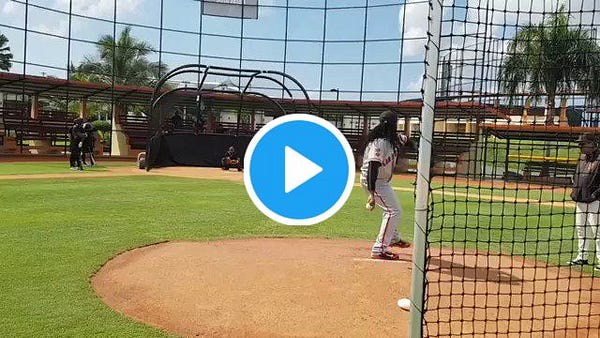
The bat has been slower to come around and it still is the biggest question in trying to determine what type of big leaguer he could be. Four years into his career he’s a .255 hitter and while batting average is highly flawed as a predictive statistic, I maintain that it has value when it comes to prospects (especially in the absence of data on quality of contact). He has always shown a decent control of the strike zone, however, with excellent contact rates and decent walk rates. He’s never posted a 20% K rate (which at this point is actually above average in the major league game) and usually sits in the mid-teens. His walk rates have usually hovered in the 7-9% range which is certainly an acceptable level. So his issues haven’t been the typical teenaged ones of expanding the zone and making too little contact. He’s made contact, it just hasn’t always been the very hard kind. And maybe that’s just fine for a 17-19 year old still growing into his body.
Somewhere around 2018-19, however, Genovés metamorphosized into a big, strong, man just like Bart, and that physical maturity started showing up in his BP sessions and even games. The version of Genovés who showed up in Salem-Keizer in 2019 was unlike anything we’d seen before. He started driving the ball with authority. His Isolated SLG, which had been in the .0xx range before, jumped up to .229. He doubled his career home run output and started producing exit velocities in the 100+ range.
Now we’re seeing a true big league profile — strong ability to catch the position and, at least occasional power. That’s the description of virtually every big league backup and more than a few starters. And over the last year, we’ve seen the Giants belief in Genovés rise. He too is getting featured in their “Train Like a Big League Catcher” videos. He, too, is getting time in big league spring training games and splitting catcher duties in their Alt Camp scrimmages with the A’s. I do believe, in the eyes of Giants development staff, the top of their catching prospect depth is a real three-headed beast with Bart, Bailey, and Genovés all sharing the limelight. And all three of these guys really should have big league careers coming their way in the not too distant future.
Rayner Santana and Adrian Sugastey have a long way to go to be mentioned in the same group as the trio above them but they’re both interesting in their different ways. Santana is the one I’m least convinced about at this point because so much of his current prospect status is based on the statistical performance he put up in the DSL — a league where statistics are not traditionally that meaningful. Santana hasn’t gotten great reviews so far for his defensive ability. He has a big body and is a little stiff in his movements. Still, that’s the scouting reports for a 15 and 16 year old, and there are many ways that could go as he matures, both good and bad. One thing that big body has shown so far, however, is tremendous power. He played all but the final two weeks of the 2019 season as a true 16-year-old and still powered 10 home runs and a .553 SLG for the DSL Giants. And that combination of age and power is simply unprecedented for the Giants at that level. There are still questions about the body and the defense, but that level of young power certainly requires we pay attention to him going forward.
Sugastey is another of the 2019 J2 class that is still awaiting his pro debut, but between the time he signed for $525,000 and today, it’s clear that his growth has impressed the Giants. He was brought to the States for Instrux last fall and is once again in the minor league camp in Scottsdale this spring. The youngster is definitely on track to make his pro debut stateside this summer in the AZL. I had Sugastey as my #50 prospect back in October, but if I redid my list today, he’d be much higher. His combination of high-level international play as a youth, defensive athleticism, and improving offensive potential have his trend lines all pointing upwards, and I think he could a kid who makes a BIG leap up prospect rankings next year.

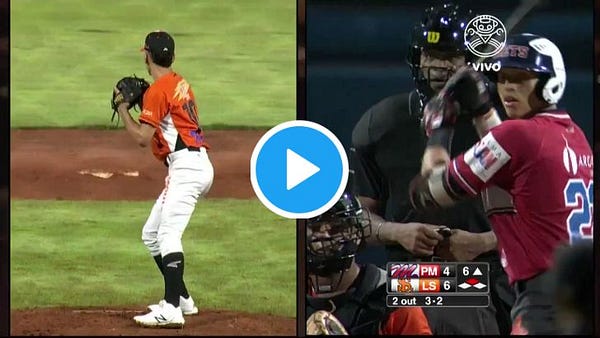
Depth Charts
One of the reasons I spent so much time above on Ricardo Genovés is that he represents the biggest deviation for me between my “way too early” roster previews and this depth chart. When doing the roster previews last winter, one of the placements I was least happy with was my decision to split Bailey and Genovés up so that they’d both be able to take the lion’s share of playing time. At this point I think that was a mistake — Genovés is probably just too advanced at this point to keep in Low-A. That means that he and Bailey might need to job share for at least the first part of this summer, while Bailey perhaps works his way into a Double-A promotion. As you can see, despite a tremendous amount of talent overall, there are still a couple of thin spots in the levels. Fabian Peńa posted a .665 OPS in the Cal League in 2019 and probably isn’t the best option for a starter in Double-A. Behind him, I’m forced to write in Shane Matheny, who’s really an infielder. I’d expect that there’s a minor league free agent signing to shore up this position.
If Genovés gets the High-A assignment, that also leaves the Low-A roster somewhat thin at the position. Andres Angulo and Jeffry Parra have both spent time at the level before and both bring truly impressive catch and throw skills along with impressive raw power when they connect. But that “making contact” part hasn’t been a strength for either so far in their careers. Rodolfo Bone and Brandon Martorano probably belong in a similar “too advanced for rookie complex but not quite up to full season ball” bucket. Really, any of these guys could also show up at higher levels for “bullpen catcher” depth as they can all catch quality stuff, which is the predominant qualification.
It might make sense to keep the multi-position, undrafted free agent Brett Auerbach in San Jose rather than shoehorn him into an already difficult rotation with Bailey and Genovés in Eugene, and I wouldn’t be surprised to see the Giants go that route. But for now, I’ll say his SEC experience prepared him for High-A and expect they’ll just find playing time on a crowded roster through a liberal dose of load management. After all, nobody is going to be expected to play every day after taking a full season off, least of all catchers.
This is the first position in which I’ve tagged on the DSL club. I did that just to highlight the fact that the Giants gave out a number of six figure bonuses to catchers in the 2019 J2 class, even beyond Sugastey. Onil Perez and Victor Coronil should be the top catchers on each of the two DSL clubs this summer. Like the Santana and Sugastey pair in the AZL, they bring very different skillsets to their teams. Perez is a classic catch and throw player who will likely hold down the #9 spot in any lineup he’s in, while Coronil is an offense-first catcher along Santana’s profile with a short-powerful stroke from the right-hand side.
It really is just an impressively deep group at nearly every level of the organization which should keep the catching position a strength for the Giants well into the future.




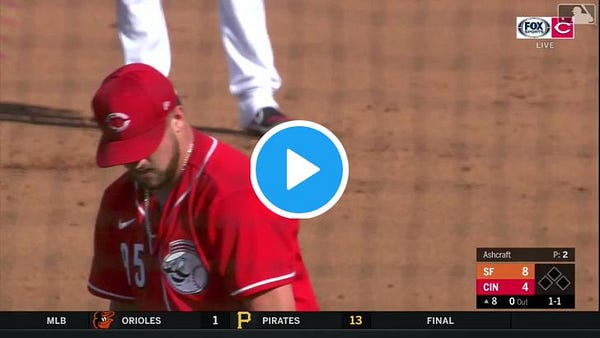

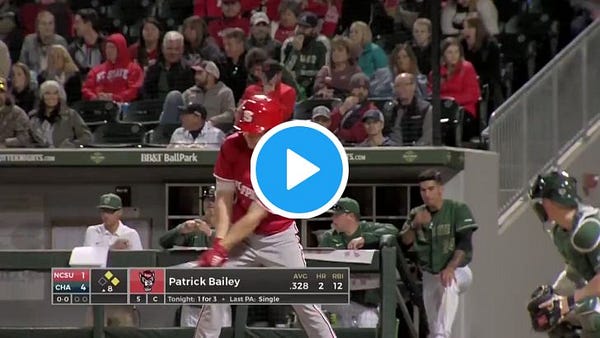

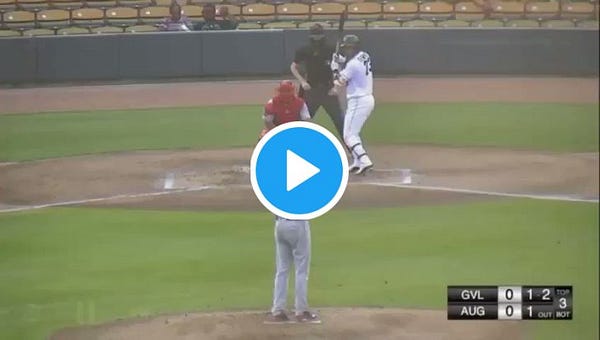

About that hole in Bart’s swing - in the Bailey video I notice that Patrick has a rather open stance. I wonder if that might be a solution for Bart. Surely there have been other tall hitters with similar problems as they developed - what did they do to succeed?
Speaking of Bart, this brings me to my frequent observation: if you have a young catcher who seems to be an outstanding hitter (let’s call him, say, Custer Bosey), why wouldn’t you move him to another position to preserve his hitting future? Is having an outstanding catcher who hits well for 5-6 years more valuable than having an outstanding hitter for 8-9 years? I don’t think so.
Rodolfo Bone is an 80 grade name.